Disclosure: Meeple Mountain received a free copy of this product in exchange for an honest, unbiased review. This review is not intended to be an endorsement.
Why do we play board games?
It’s a big question, but this is the internet so let’s throw subtlety out the window and choose the easiest narrative possible:
Playing board games is rewarding.
Granted, definitions of ‘rewarding’ are likely to be different. Janet gets a kick out of crushing her opponents at Blood Rage. Xiaofeng likes giggling with his friends into the early hours of the morning playing Stay Cool. Kelly takes great pleasure in looking at the city they’ve created at the end of a game of Suburbia. Efua loves feeling wicked smart whilst navigating the complexities of Terra Mystica. Juan enjoys learning about science and having fun at the table. Janet and company all find board games rewarding, even if the specific rewards vary.
And me? I like a game that understands how it ‘rewards’ its players and accentuates those elements.
It’s something I’ve been thinking about a lot whilst playing Dunaïa.
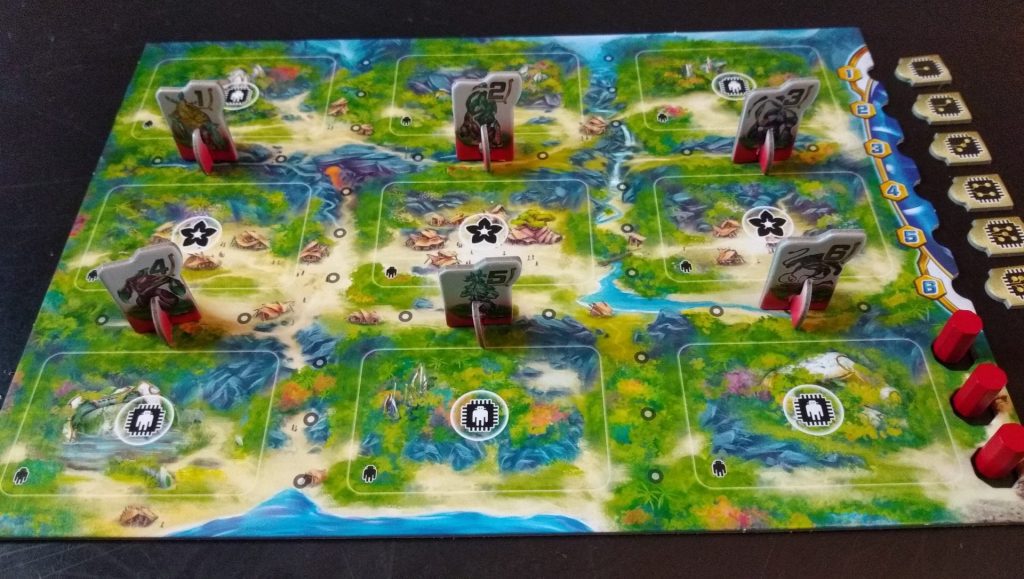
A turn in Dunaïa sees you selecting a single die from a central pool and using its face value to activate the matching numbered robot on your player board. The robot triggers the effects of the two spaces or buildings it’s stood between, allowing you to move robots around your board, gain resources to put towards scoring points, or advance the construction of further buildings that give you more abilities, resources and points. What’s more, strategically placing buildings of certain colours next to each other enhances building effects even further.
What really works here is that the pool of dice you’re choosing from consists of common dice available to everyone as well as a single die for each player which can’t be taken until after all the common dice have been chosen. You may not be able to control which dice your opponents take but you can be sure of your final die and plan for that turn accordingly, moving the appropriate robot about the board to set up an especially rewarding turn before all the dice are rerolled and the cycle starts again.
But wait, for selecting a die and activating a robot is only half your turn. Once your metal machine has done its stuff you then ‘recycle’ that same die, ignoring its face value and triggering a second action (broadly similar to the robot-activated actions) from either the main board or from a constructed building on your own or an opponent’s player board.

With its two different but interlinked actions, Dunaïa’s short turns are generous and lively. Quickly the momentum builds and within 15 minutes you’re greedily collecting resources, triggering special powers, fulfilling goals and assembling pretty point-providing puzzles, all of which help you to, hopefully, win the game.
Taken all together it’s… fine. Honestly, it’s good. I just wish it was better.
The problem is that Dunaïa doesn’t seem to understand what’s rewarding about its own design.
The best moments are when the geographical combination of neighbouring buildings and moveable robots align, interlinking to repay all your previous turns tenfold. These are deeply satisfying turns, making you feel oh-so-clever as you palpably sense yourself surging towards victory. Yet the dizzy highs of this spatial ballet are vanishingly rare and it’s entirely down to Dunaïa’s own restrictions.
You see, you can only ever have a maximum of nine buildings, arranged in a 3-by-3 grid. Not that you’ll likely see anyone complete nine buildings – the goals that trigger the endgame if achieved are often finished long before a ninth building is planned (I’ve seen games end with some players having just five buildings). There’s neither the time nor the space to enjoy the puzzle of how you arrange and best utilise your buildings and robots.
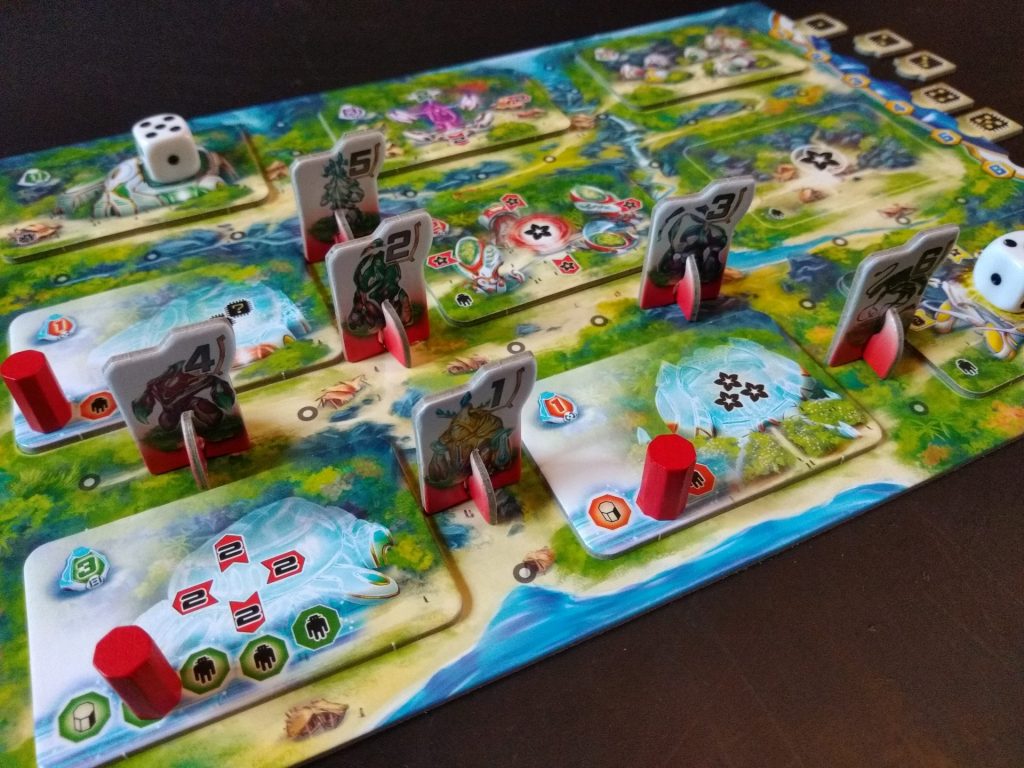
Compounding these temporal restrictions are the buildings themselves. Whilst there are 40 buildings included in Dunaïa, there are only nine different types, split across three levels:
Level 1 buildings improve your die recycling abilities.
Level 2 buildings improve your robot activation abilities.
Level 3 buildings give you lots of points.
It all sounds sensible until you realise that once built, the Level 1 and 3 buildings are completely useless when it comes to activating your robots, creating areas of dead space in an already small board. By constructing just two buildings you can reduce the number of efficient locations for your robots to stand in from 12 down to 8 or even 6, halving the decision space of one of the most satisfying parts of the whole game. Dunaïa presents itself as a tempting puzzle pie of positioning robots to activate spaces but then quickly scoops out most of the filling and throws it on the floor.
It’s a self-inflicted soggy-bottom that highlights the deficiencies elsewhere. Constructing your buildings is worthy but doesn’t make for riveting individual turns. The resources you collect (‘metal flowers’ and ‘memory chips’) function independently, linearly and, as a result, dully – each allows you to purchase its own product (buildings and ‘artefact fragments’ respectively) and that’s about it. You collect them, spend them on the only thing you really can spend them on and repeat.
The artefacts themselves, whilst pretty, are especially uninspiring – collect three fragments to complete an artefact and at game end you’ll get points for the number of finished artefacts you’ve got. To continue the pie analogy for just a moment longer, it’s as if Dunaïa gets you salivating and then hands you a dry bit of crust.

If all this was in service to a captivating story then it wouldn’t matter as much but you’ll notice that this is the first time I’m mentioning narrative and that should tell you something about how engaging, integrated and signposted the setting and theme are.
Technically, the robots are called Dunaïa and were created by an ancient civilisation which collapsed after power struggles to control of them. The players represent tribal chiefs trying to demonstrate that they are the most worthy to become the ‘protector of the Dunaïa’ and thus lead a new age of peace and prosperity. It leaves a lot of questions unanswered:
What are the artefacts and what do they do? No idea.
What are the metal flowers? Err… I think maybe they’re just flowers made of metal that grow in this fictional world. They sound cooler than they are.
Why does building colour make a difference to adjacent building productivity? Your guess is as good as mine.
Who are the elders? In my initial games I thought the elders were the wise old members of your tribe, but I’ve since worked out that they’re holographic recordings from the fallen civilisation that can be accessed using combinations of memory chips to find out where artefact fragments are hidden. And divining that much took multiple read-throughs of the rule book and some joining of dots.
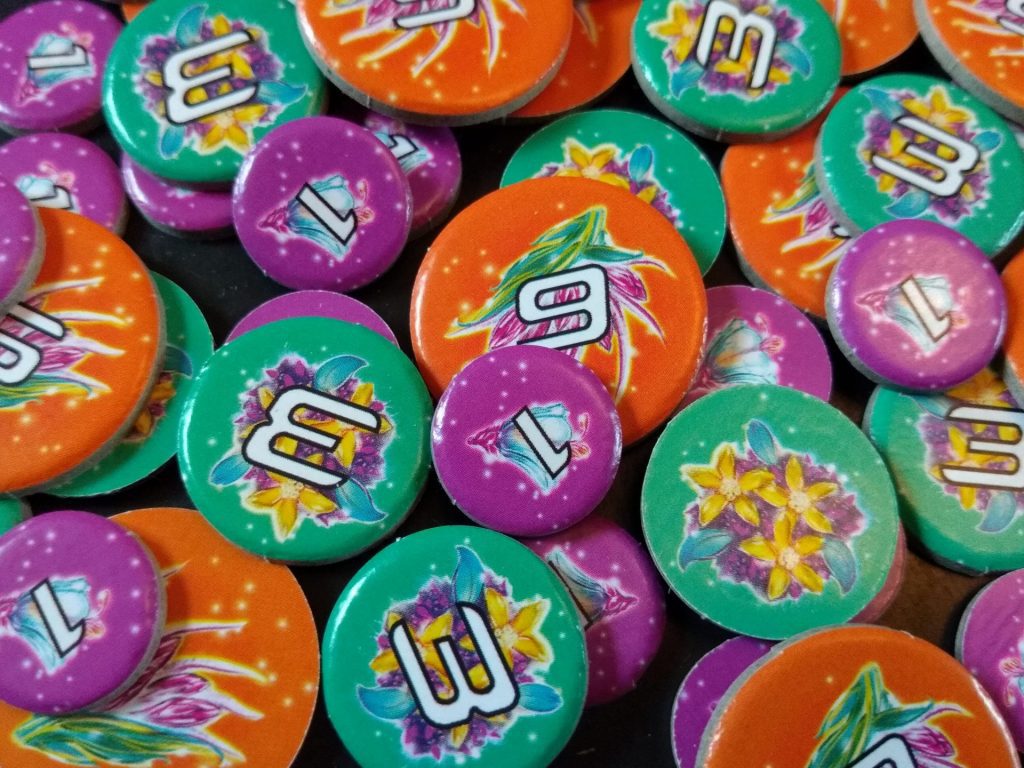
Despite all the work gone into establishing a setting, Dunaïa never really feels like there’s a purpose behind any of it. As a result, all this world building does little more than make the game harder to learn and engage with. It promises excitement – Metal Flowers! Giant Robots! Elder Powers! – but there’s nothing behind any of it and little reason to invest.
The robots themselves are a perfect example – they’re huge beings ‘fuelled by a mysterious energy’ and wielding ‘complex powers’ that a whole civilisation destroyed themselves over. And what do you end up doing with these incredible, unknowable, all-powerful machines? You use them for harvesting some flowers and as construction vehicles. Like the slightly-too-small standees that represent them on your player board, they’re a bit underwhelming.
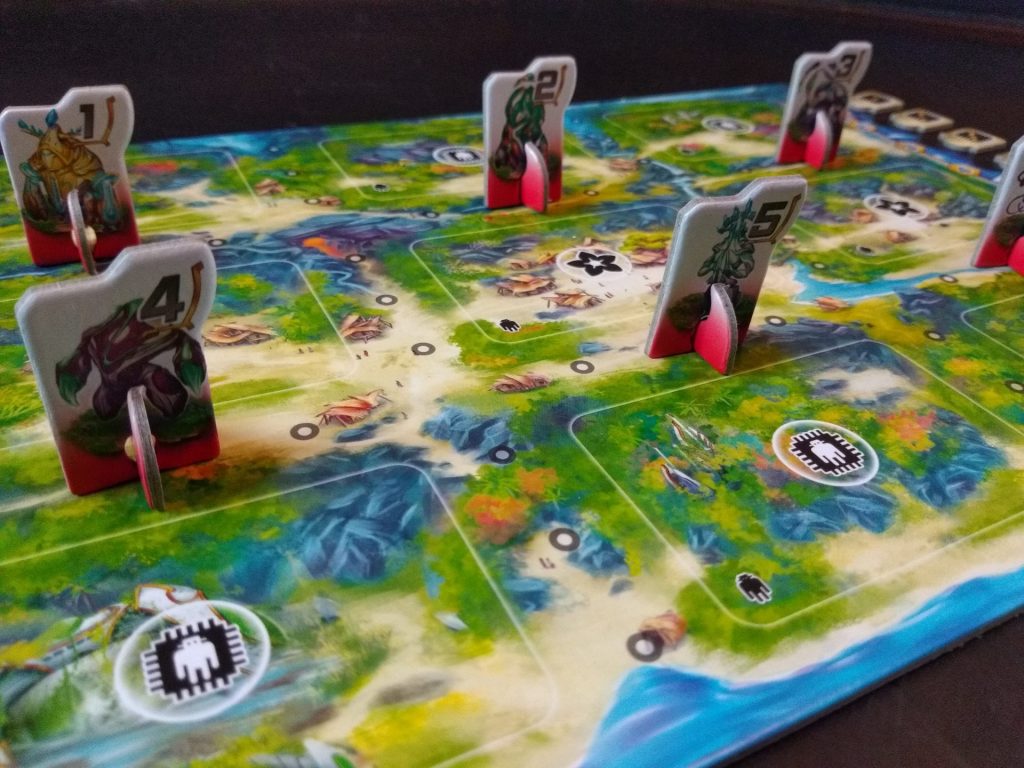
Effort has clearly been taken to create a cohesive world but little has been shared with the players other than at the surface level. There’s no denying that Dunaïa is a lovely game to look at, its forest setting luscious and vibrant. The combined effect of the dice, tiles, player boards, resources and robots gives it a great table presence, the use of colour, shape and vertical structure really making it pop. It’s just a shame that it’s all in service to a game that doesn’t seem to care.
Perhaps I’m being overly harsh, but it’s criticism that’s rooted in frustration and a wish for something good to be better. Dunaïa is an enjoyable game. It’s a visual delight, has some interesting design ideas, makes you feel smart as a result of your own decisions, and one of the bonus actions is genuinely excellent (in a typical bit of self-sabotage from Dunaïa it’s randomly selected during set up so you won’t see if every game).
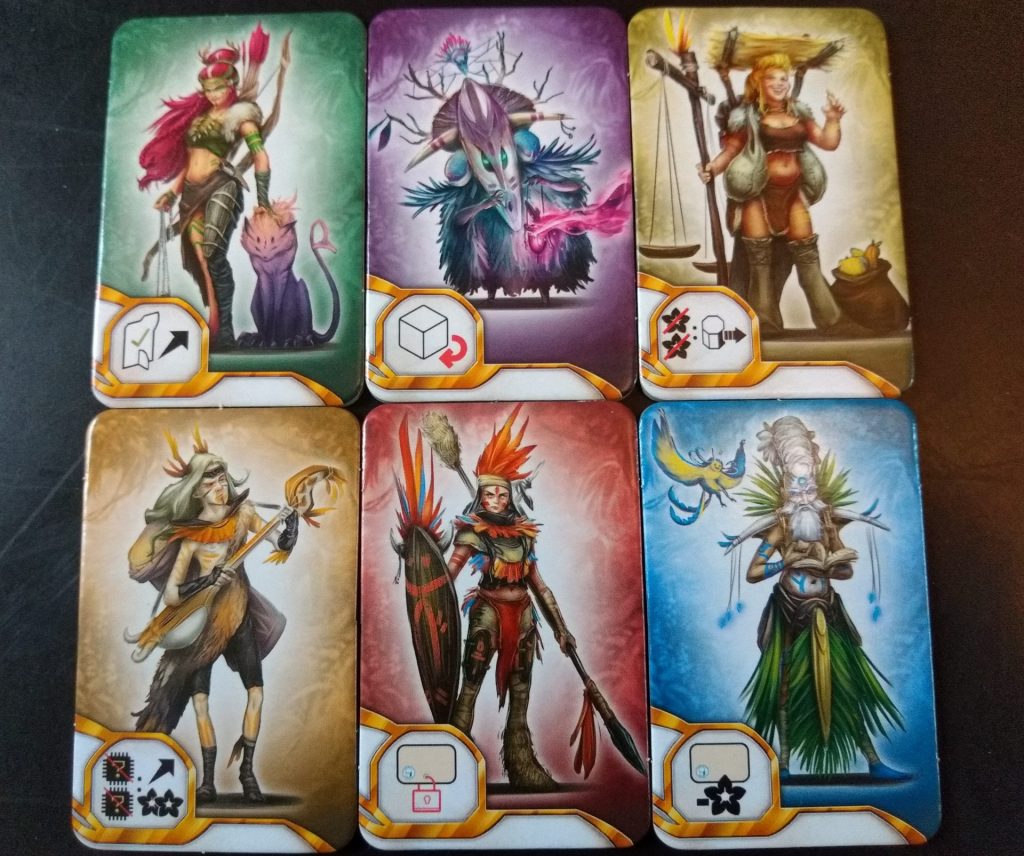
But, for me, Dunaïa isn’t aware of how it rewards its players. Instead of accentuating those rewards, it limits and restricts them, forcing players to focus on elements of the game that aren’t as compelling. There’s genuine potential for the game to be so much more and I’d love to see designer Thomas Dupont take some of Dunaïa’s high points and expand on them. As it stands, however, Dunaïa is good but a long way from great, a victim of its self-imposed limitations, a curious lack of ambition and an active disinterest in its own story.




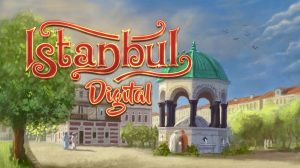






Add Comment